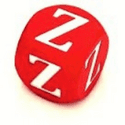Introduction
Introduction
Welcome back to “Zoho Inventory Videos,” the definitive series where we break down complex inventory concepts into digestible insights. If you’ve been following along, you’ll recall our exploration of inventory valuation techniques, notably FIFO and LIFO, in our prior episodes. Today, we venture into the realm of the inventory weighted average cost method, a dynamic and unique approach to inventory management software valuation. Unlike FIFO (First-In, First-Out) and LIFO (Last-In, First-Out), which revolve around the sequencing of stock intake and release, the weighted average method offers a holistic viewpoint, taking all stock purchases into account to determine an average cost. As we delve deeper into inventory weighted average cost, you’ll discover its intricacies, benefits, and how it holds up against FIFO and LIFO. Whether you’re a seasoned business owner, an inventory novice, or someone keen on understanding the financial mechanics behind the scenes, this episode promises to enlighten you. Let’s embark on this journey together!
What is the Weighted Average Method (WHAM)?
What is the Weighted Average Method (WHAM)?
The Weighted Average Method (WHAM) is an inventory valuation method that calculates the average cost of inventory over a specific period. Unlike FIFO or LIFO, which rely on the chronological order of inventory purchases, WHAM assigns the average cost of production to a product, resulting in a cost that represents a midpoint valuation. The method is commonly used in accounting and is permitted under both GAAP and IFRS accounting. The formula for the weighted average cost method is to divide the cost of goods available for sale by the number of units available for sale. The result of using the weighted average cost method is that the recorded amount of on-hand inventory will represent a value somewhere between the oldest and most recent stock units purchased. The method is helpful for businesses that have inventory prices that vary widely, but it may not recover the costs of the more expensive units and may even result in a loss. The weighted average cost method simplifies accounting by revealing the average cost of each piece, which saves time and keeps bookkeeping headaches at bay.
How is WHAM Different?
Which is better FIFO or weighted average?
What are the advantages of the inventory weighted average method?
Case Study: Application in a Footwear Store
Deriving the Weighted Average Price:
Before we can determine the inventory asset value, we need to first calculate the average purchase price.
If we merely average the prices (i.e., $50, $51, and $45), we get: (50 + 51 + 45) ÷ 3 = $48.66.
However, this regular average price doesn't truly reflect the distribution of items. That's why we turn to the weighted average price.
The weighted average price for the 200 pairs of sneakers (pre-sale) is:
[(50 pairs x $50) + (50 pairs x $51) + (100 pairs x $45)] ÷ 200 = ($2,500 + $2,550 + $4,500) ÷ 200 = $9,550 ÷ 200 = $47.75
Upon selling 120 pairs, the asset value of the items sold is: $47.75 x 120 = $5,730
The value of the remaining inventory is: 80 pairs x $47.75 = $3,820
Combining the asset values of the sold pairs with the remaining inventory: $5,730 + $3,820 = $9,550, providing an accurate total inventory asset value.
Conclusion
Conclusion
Citations:
[1] https://corporatefinanceinstitute.com/resources/accounting/weighted-average-cost-method/
[2] https://www.unleashedsoftware.com/blog/weighted-average-cost-method-inventory-valuation
[3] https://www.shipbob.com/au/blog/inventory-weighted-average/
[4] https://accountinginfocus.com/financial-accounting/inventory/weighted-average-inventory/
[5] https://www.shopify.com/retail/weighted-average-cost-method
[6] https://www.accountingtools.com/articles/weighted-average-method-weighted-average-costing
